BMW i5 Touring vs BMW iX - Differences and prices compared
Costs and Efficiency:
Price and efficiency are often the first things buyers look at. Here it becomes clear which model has the long-term edge – whether at the pump, the plug, or in purchase price.
BMW i5 Touring has a a bit advantage in terms of price – it starts at 61900 £, while the BMW iX costs 71600 £. That’s a price difference of around 9686 £.
In terms of energy consumption, the advantage goes to the BMW i5 Touring: with 15.40 kWh per 100 km, it’s somewhat more efficient than the BMW iX with 17.80 kWh. That’s a difference of about 2.40 kWh.
As for range, the BMW iX performs to a small extent better – achieving up to 701 km, about 99 km more than the BMW i5 Touring.
Engine and Performance:
Power, torque and acceleration say a lot about how a car feels on the road. This is where you see which model delivers more driving dynamics.
When it comes to engine power, the BMW iX has a slight edge – offering 659 HP compared to 601 HP. That’s roughly 58 HP more horsepower.
In acceleration from 0 to 100 km/h, the BMW iX is minimal quicker – completing the sprint in 3.80 s, while the BMW i5 Touring takes 3.90 s. That’s about 0.10 s faster.
In terms of top speed, the BMW iX performs slight better – reaching 250 km/h, while the BMW i5 Touring tops out at 230 km/h. The difference is around 20 km/h.
There’s also a difference in torque: BMW iX pulls a bit stronger with 1015 Nm compared to 820 Nm. That’s about 195 Nm difference.
Space and Everyday Use:
Beyond pure performance, interior space and usability matter most in daily life. This is where you see which car is more practical and versatile.
Seats: offers more seating capacity – vs .
In curb weight, BMW i5 Touring is slightly lighter – 2255 kg compared to 2525 kg. The difference is around 270 kg.
In terms of boot space, the BMW i5 Touring offers to a small extent more room – 570 L compared to 500 L. That’s a difference of about 70 L.
In maximum load capacity, the BMW iX performs minimal better – up to 1750 L, which is about 50 L more than the BMW i5 Touring.
When it comes to payload, BMW iX hardly perceptible takes the win – 575 kg compared to 560 kg. That’s a difference of about 15 kg.
Who comes out on top?
Overall, the BMW iX shows itself to be wins by a narrow margin and secures the title of DriveDuel Champion.
It convinces with the more balanced overall package and proves to be the more versatile choice for everyday use.
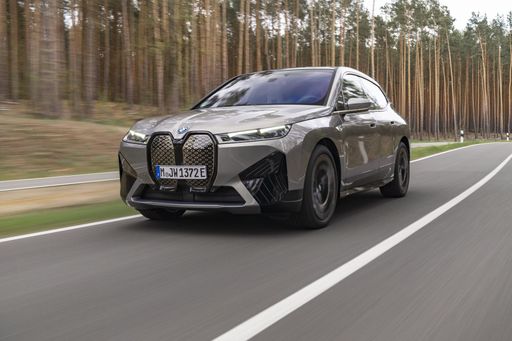 @ BMW Group Press
@ BMW Group Press
BMW iX
Costs and Consumption
View detailed analysis
Engine and Performance
View detailed analysis
Dimensions and Body
View detailed analysis
BMW i5 Touring
The BMW i5 Touring marries the everyday usefulness of a roomy estate with the hushed, premium feel of a modern electric BMW. It’s an appealing choice for buyers who want confident, relaxed driving and executive poise without sacrificing weekend practicality — and it even makes loading skis feel slightly glamorous.
details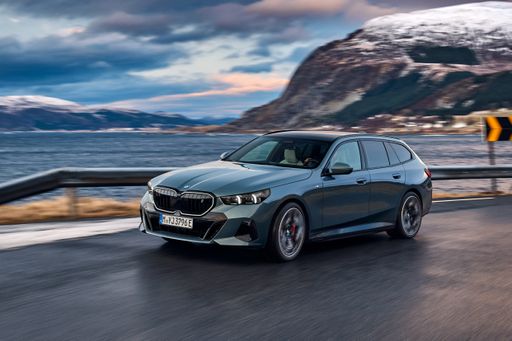 @ BMW Group Press
@ BMW Group Press
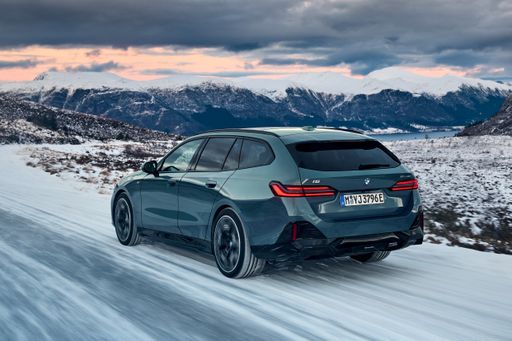 @ BMW Group Press
@ BMW Group Press
BMW iX
The BMW iX arrives like a tech-rich luxury SUV that refuses to shout, offering a serene yet authoritative road presence that suits both city commutes and long-distance cruising. Inside, its minimalist cabin wraps high-quality materials and clever interfaces around a driver-focused layout, making it feel more like a forward-thinking lounge than just another electric appliance — and yes, it still delivers the dynamic driving character you'd expect from a BMW.
details @ BMW Group Press
@ BMW Group Press
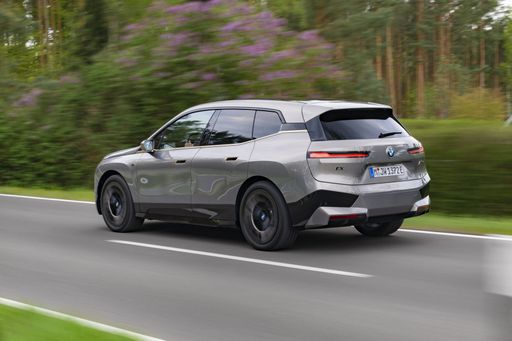 @ BMW Group Press
@ BMW Group Press
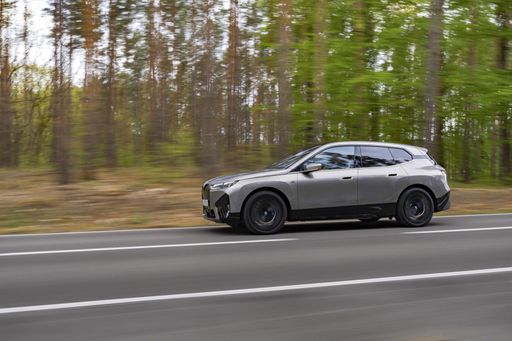 @ BMW Group Press
@ BMW Group Press
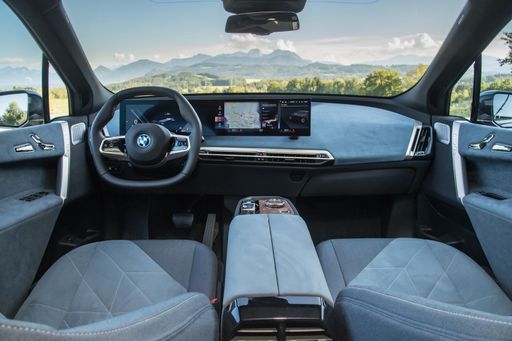 @ BMW Group Press
@ BMW Group Press
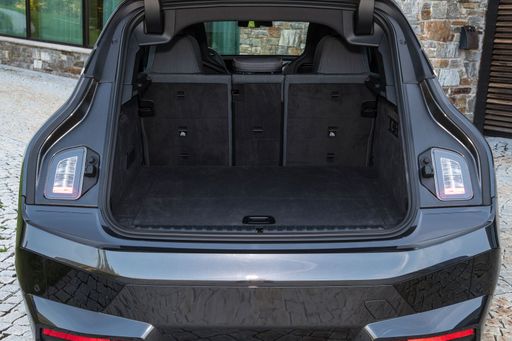 @ BMW Group Press
@ BMW Group Press
 @ BMW Group Press
@ BMW Group Press
|
 @ BMW Group Press
@ BMW Group Press
|
|
|
|
Costs and Consumption |
|
|---|---|
|
Price
61900 - 87000 £
|
Price
71600 - 107100 £
|
|
Consumption L/100km
-
|
Consumption L/100km
-
|
|
Consumption kWh/100km
15.4 - 17.7 kWh
|
Consumption kWh/100km
17.8 - 20.6 kWh
|
|
Electric Range
522 - 602 km
|
Electric Range
600 - 701 km
|
|
Battery Capacity
81.20 kWh
|
Battery Capacity
96 - 109.6 kWh
|
|
co2
0 g/km
|
co2
0 g/km
|
|
Fuel tank capacity
-
|
Fuel tank capacity
-
|
Dimensions and Body |
|
|---|---|
|
Body Type
Estate
|
Body Type
SUV
|
|
Seats
5
|
Seats
5
|
|
Doors
4
|
Doors
5
|
|
Curb weight
2255 - 2425 kg
|
Curb weight
2525 - 2655 kg
|
|
Trunk capacity
570 L
|
Trunk capacity
500 L
|
|
Length
5060 mm
|
Length
4965 mm
|
|
Width
1900 mm
|
Width
1970 mm
|
|
Height
1505 - 1515 mm
|
Height
1688 - 1695 mm
|
|
Max trunk capacity
1700 L
|
Max trunk capacity
1750 L
|
|
Payload
535 - 560 kg
|
Payload
505 - 575 kg
|
Engine and Performance |
|
|---|---|
|
Engine Type
Electric
|
Engine Type
Electric
|
|
Transmission
Automatic
|
Transmission
Automatic
|
|
Transmission Detail
Reduction Gearbox
|
Transmission Detail
Reduction Gearbox
|
|
Drive Type
All-Wheel Drive, Rear-Wheel Drive
|
Drive Type
All-Wheel Drive
|
|
Power HP
340 - 601 HP
|
Power HP
408 - 659 HP
|
|
Acceleration 0-100km/h
3.9 - 6.1 s
|
Acceleration 0-100km/h
3.8 - 5.1 s
|
|
Max Speed
193 - 230 km/h
|
Max Speed
200 - 250 km/h
|
|
Torque
430 - 820 Nm
|
Torque
700 - 1015 Nm
|
|
Number of Cylinders
-
|
Number of Cylinders
-
|
|
Power kW
250 - 442 kW
|
Power kW
300 - 485 kW
|
|
Engine capacity
-
|
Engine capacity
-
|
General |
|
|---|---|
|
Model Year
2024
|
Model Year
2025
|
|
CO2 Efficiency Class
A
|
CO2 Efficiency Class
A
|
|
Brand
BMW
|
Brand
BMW
|
Is the BMW i5 Touring offered with different drivetrains?
The BMW i5 Touring is offered with All-Wheel Drive or Rear-Wheel Drive.
The prices and data displayed are estimates based on German list prices and may vary by country. This information is not legally binding.
